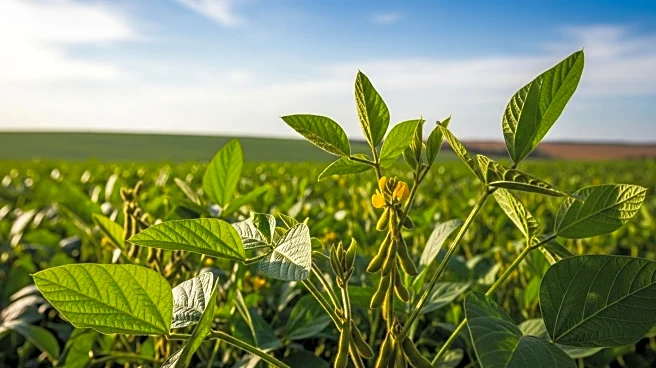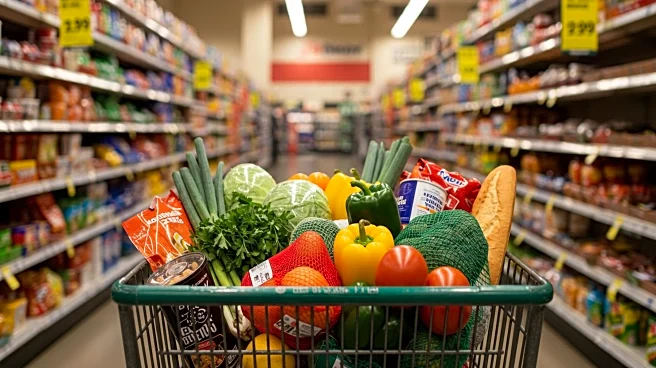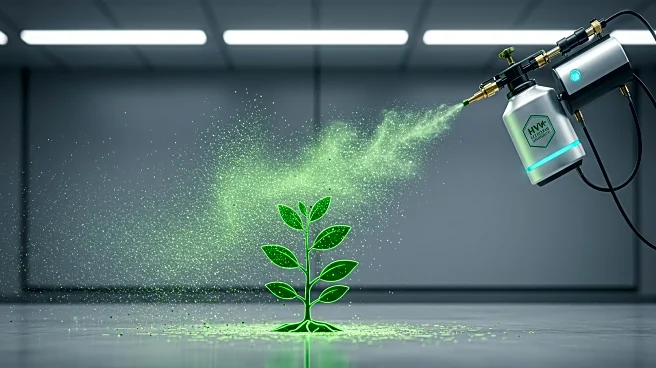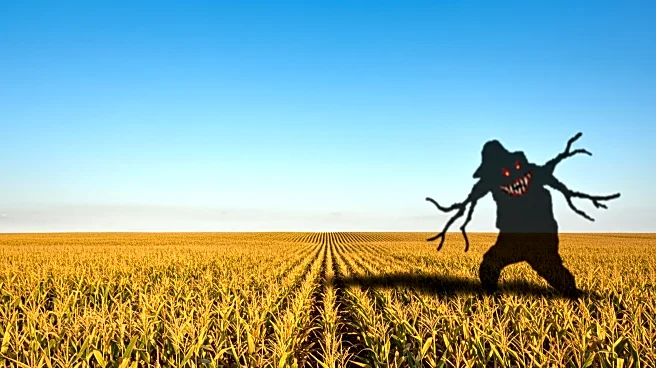What's Happening?
Brazil, the world's largest soybean producer, is expected to see a 3% increase in its 2025/2026 soybean crop, reaching 176.5 million metric tons, according to consultancy AgResource. The area dedicated to soybean cultivation is projected to grow by 2% to 48.7 million hectares, marking the slowest expansion rate in five years. The planting season typically begins in September. Additionally, Brazil's corn crop for the same period is anticipated to rise by 0.7% to 138.4 million tons, with the second corn crop contributing 110.4 million tons, a 2% increase.
Why It's Important?
The projected growth in Brazil's soybean and corn production is significant for global agriculture markets, as Brazil is a key player in these sectors. Increased production could influence global supply chains, potentially affecting prices and trade dynamics. U.S. farmers and agricultural businesses may face increased competition, impacting export opportunities and market share. The slow growth rate in soybean cultivation area suggests potential challenges in land availability or environmental constraints, which could have long-term implications for agricultural expansion.
What's Next?
Farmers in Brazil are set to begin planting the new soybean crop in September, with the corn crop already underway. The agricultural sector will closely monitor weather conditions and market demands, which could affect final production outcomes. Stakeholders, including international buyers and trade partners, will likely adjust strategies based on Brazil's production forecasts, potentially influencing global trade agreements and pricing structures.
Beyond the Headlines
The slow pace of expansion in soybean cultivation area may reflect broader environmental or regulatory challenges in Brazil. This could lead to increased scrutiny on sustainable farming practices and land use policies. Additionally, the growth in corn production highlights the importance of crop rotation and efficient land use, which are critical for maintaining soil health and productivity.












